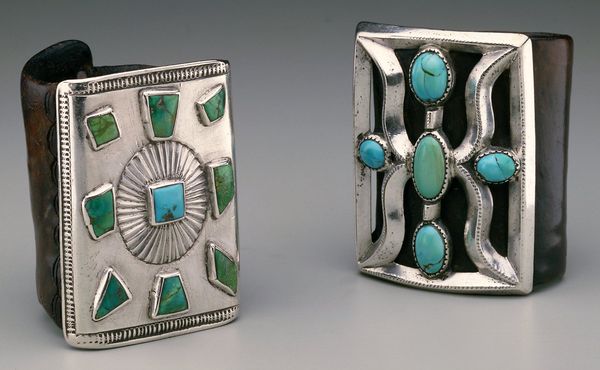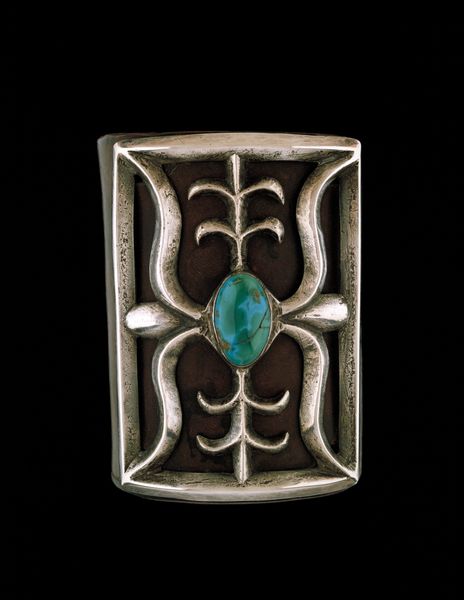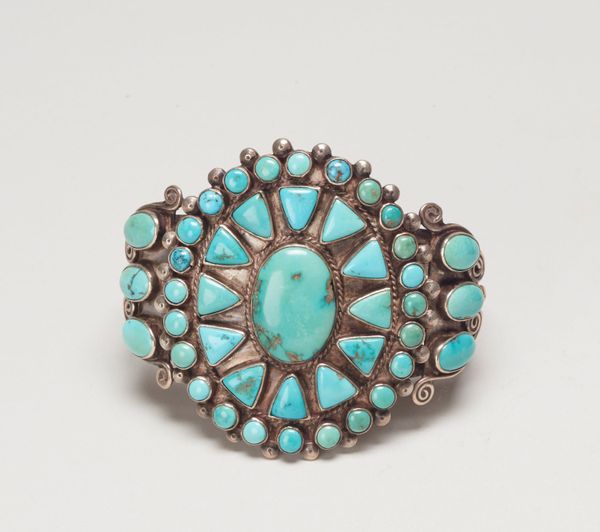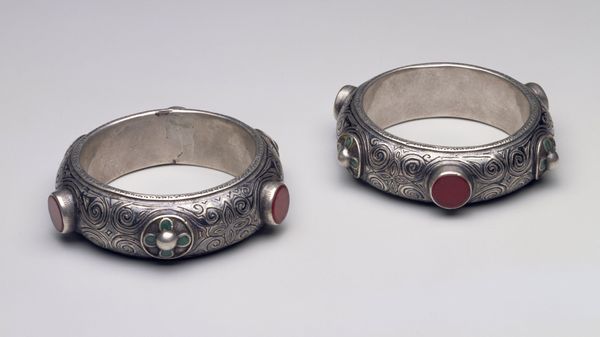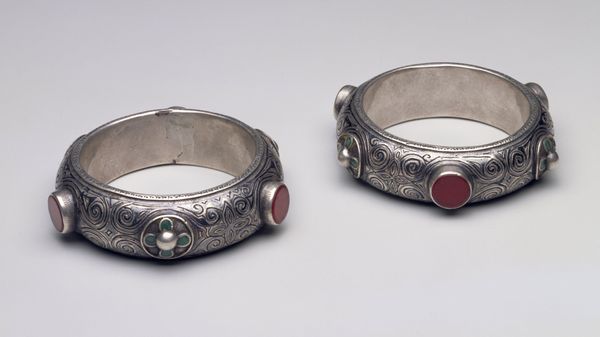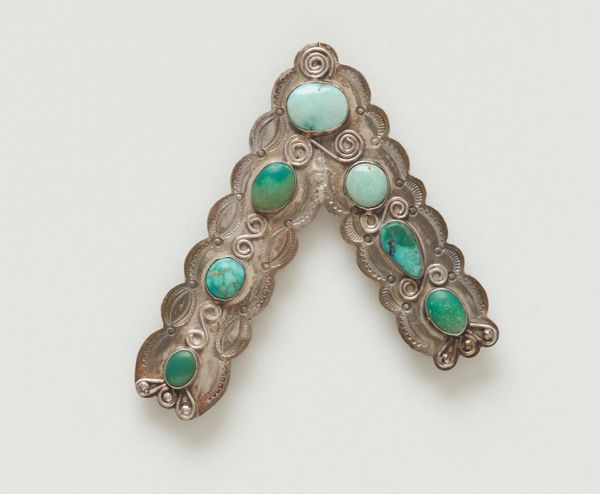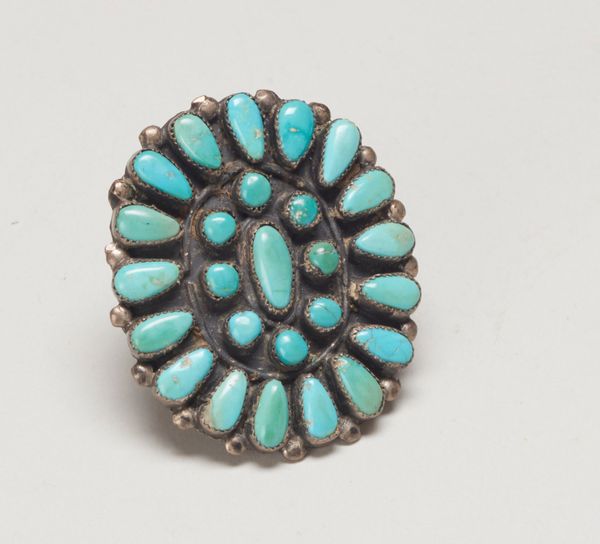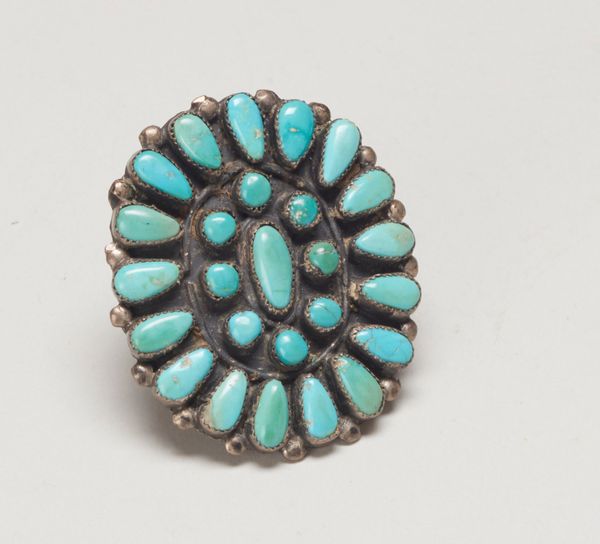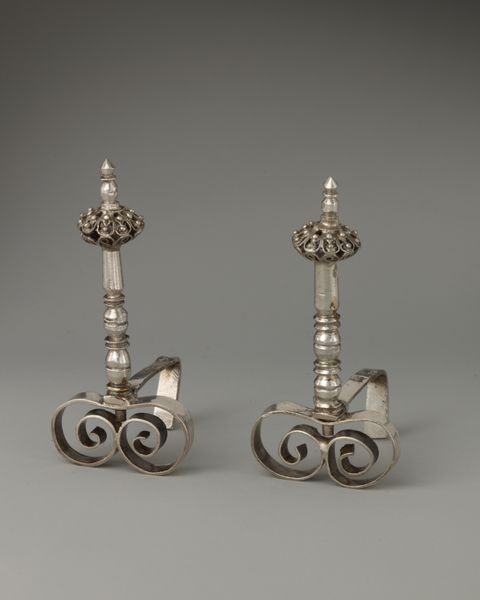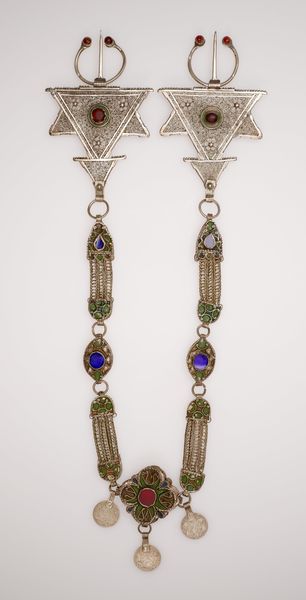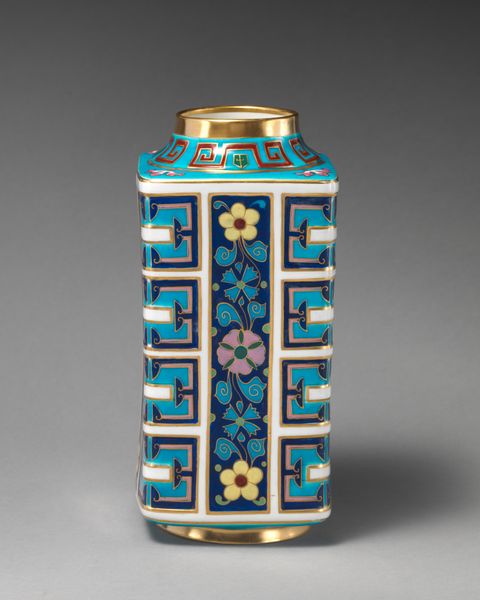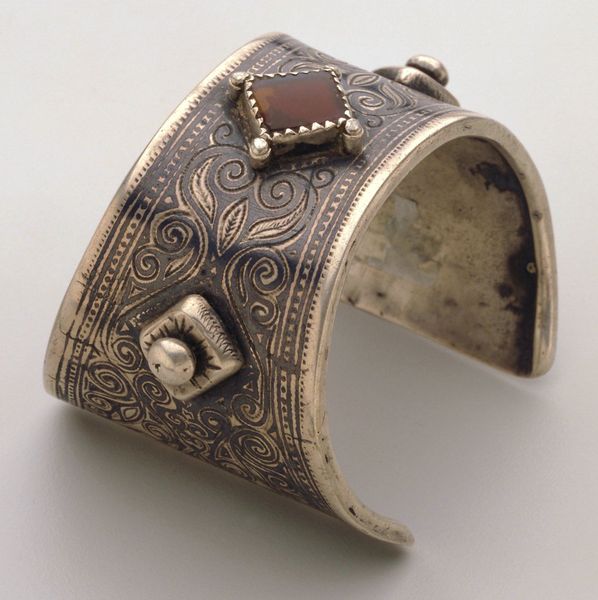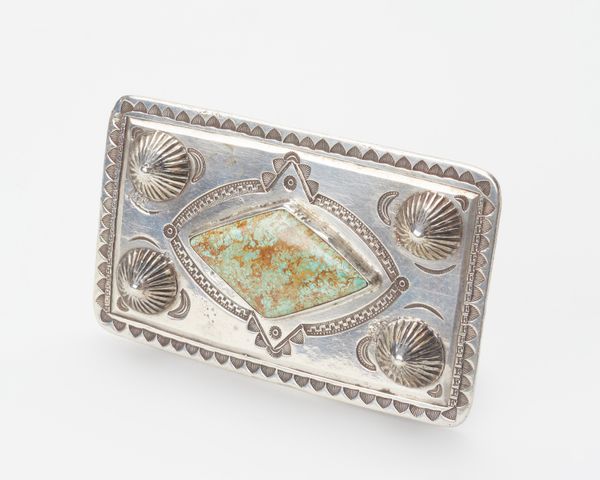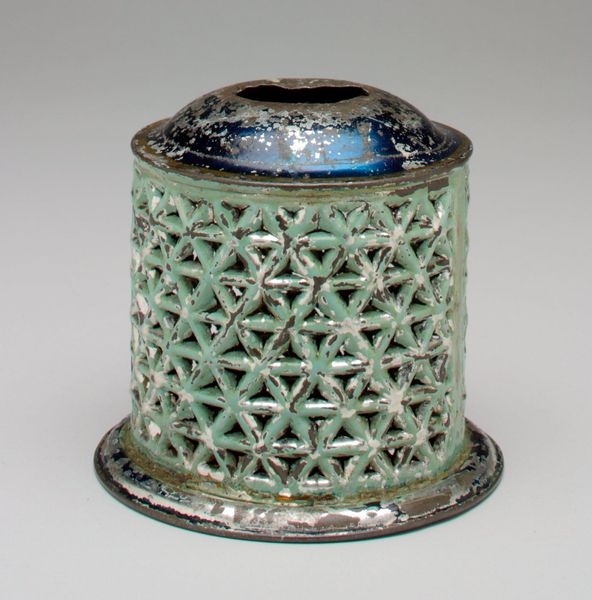
silver, metal
#
silver
#
metal
#
jewelry design
#
geometric
#
indigenous-americas
Copyright: Public Domain
Curator: We're looking at a pair of ketoh, or bow guards, crafted around 1920 by an artist of the Navajo, or Diné, people. These pieces, currently residing at the Minneapolis Institute of Art, feature both silver and metal elements. Editor: My initial impression is one of quiet strength. They feel deeply connected to the earth and sky, don't you think? There’s something powerful yet protective about them. Curator: Absolutely. Ketoh hold significance far beyond mere decoration. These weren't simply decorative items; they served a practical function, protecting the wearer's wrist from the bowstring when released. We can also see these as markers of identity and status, evolving alongside interactions between the Diné and Anglo-American communities. Editor: I see what you mean. There’s this striking juxtaposition— the practicality meeting spiritual meaning. They feel like tiny shields holding stories, or silent protectors carrying a legacy within them. The turquoise specifically is like little frozen pieces of the sky, nestled into the silver. Curator: And those geometric patterns! The turquoise and silver combinations offer us an exciting lens through which we might contemplate shifting colonial dynamics and the interplay of Indigenous aesthetics and external influences. The artistry lies not just in the craftsmanship but also in the negotiation of cultural space. Editor: They remind me of desert landscapes— expansive, yet so carefully detailed. These are not just static objects but emblems of a culture in motion. The precision, the thought poured into something functional, elevates it beyond mere utility. You could stare at the symmetry all day. Curator: I agree completely. The geometric nature speaks to broader Indigenous visual languages while reflecting unique innovations from the artist and their cultural context. By looking at objects like this, we can delve deeper into dialogues about cultural preservation and appropriation within art history. Editor: Definitely. They seem like artifacts whispered back from another world or dimension entirely, resonating still, with that very specific, deeply embedded story they possess. Makes me feel all reflective... Curator: They serve as critical reminders of the complexities inherent in navigating history and identity, as we interpret visual pieces from different contexts. They bring forth questions about representation, agency, and the ongoing legacies of colonialism that impact Indigenous communities worldwide. Editor: You know what? After considering it more, these strike me as something really profound—they make you think about permanence, even the immortality of human expression, right? That’s powerful in itself.
Comments
No comments
Be the first to comment and join the conversation on the ultimate creative platform.
